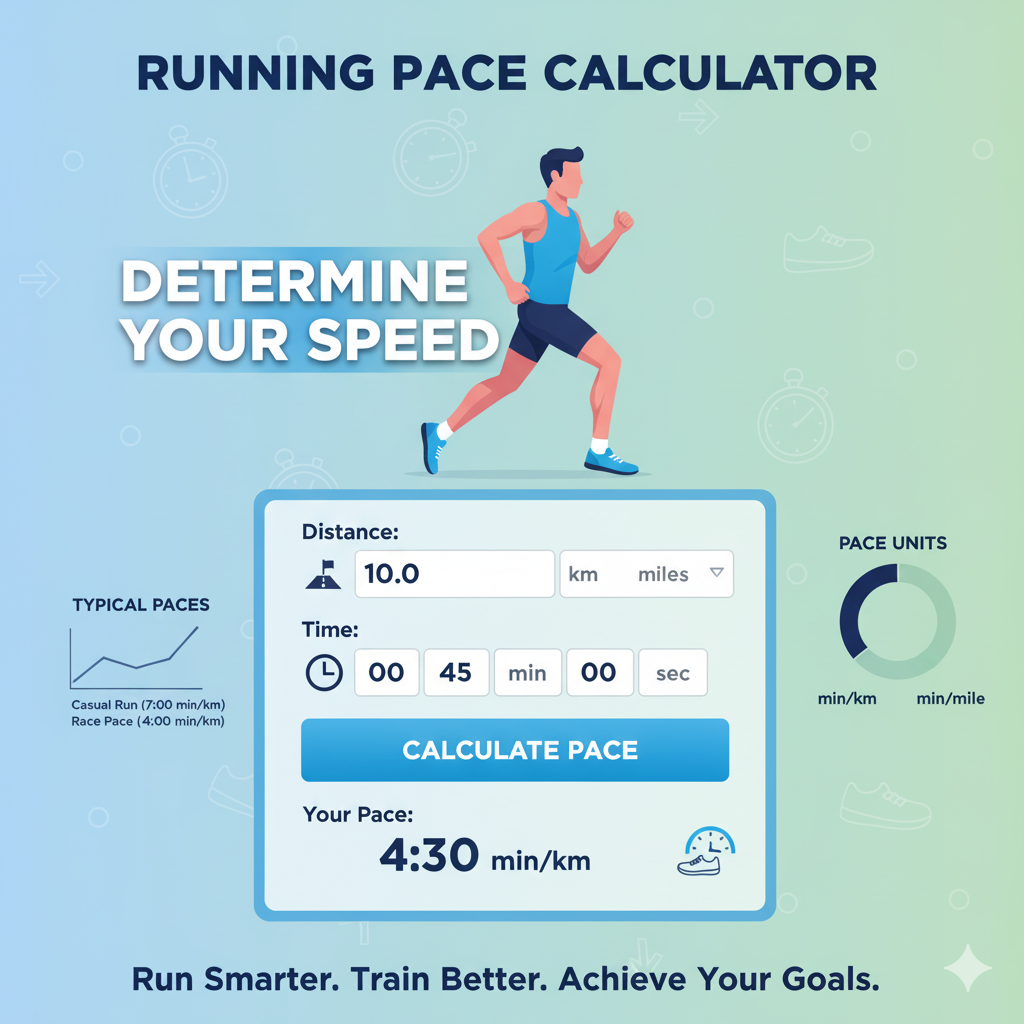Pace Calculator: Your Ultimate Guide to Running, Training & Race Analysis
Whether you’re training for your first 5K, chasing a personal best in the half marathon, or preparing for a full marathon, understanding your pace is essential. A pace calculator allows you to analyze your running speed, calculate splits, plan training sessions, and estimate finish times for different distances. In this blog, we’ll cover everything about pace calculation, distance-based analysis, split breakdowns, and even provide international race statistics for better context.
What is a Pace Calculator?
A pace calculator is a tool that helps runners determine how fast they’re running per mile or kilometer. Pace is usually expressed in minutes per mile (min/mi) or minutes per kilometer (min/km). For example, if you complete a 10K (6.2 miles) in 50 minutes, your average pace is about 8:03 minutes per mile.
Key Features:
- Pace Calculation: Estimate your speed for different distances.
- Distance Conversion: Switch between miles and kilometers easily.
- Split Analysis: Break down performance per mile or kilometer.
- Race Prediction: Estimate finish times for popular race distances.
How to Use the Pace Calculator
- Enter your distance (e.g., 5K, 10K, half marathon, marathon).
- Input your time (hours, minutes, seconds).
- The calculator will show your average pace per km/mi.
- Optionally, generate split analysis for even pacing.
Distance Calculator for Runners
The pace calculator can also be used as a distance calculator. If you know your pace and time, it will compute the distance you’ve covered. For example, if you run at 6:00 min/km for 30 minutes, you’ve covered 5 km.

Split Analysis: Why It Matters
Splits help you analyze consistency during training and races. By breaking down your race into smaller segments, you can track where you slowed down, maintained, or accelerated. Many elite runners aim for negative splits—running the second half faster than the first.
International Marathon & Half Marathon Average Pace Data
To provide real-world context, here’s a table of average finishing times and paces from some of the world’s most popular races:
| Race | Distance | Average Finish Time | Average Pace (min/km) | Average Pace (min/mi) |
|---|---|---|---|---|
| Boston Marathon (USA) | 42.195 km | 3:53:00 | 5:32 | 8:55 |
| London Marathon (UK) | 42.195 km | 4:20:00 | 6:10 | 9:55 |
| Berlin Marathon (Germany) | 42.195 km | 4:05:00 | 5:48 | 9:20 |
| New York City Marathon (USA) | 42.195 km | 4:35:00 | 6:31 | 10:28 |
| Tokyo Marathon (Japan) | 42.195 km | 4:15:00 | 6:02 | 9:43 |
| Paris Half Marathon (France) | 21.097 km | 2:05:00 | 5:56 | 9:32 |
Benefits of Using a Pace Calculator
- Plan Your Training: Adjust workouts based on target race pace.
- Set Realistic Goals: Estimate achievable finishing times.
- Track Progress: Monitor improvements in speed and endurance.
- Race Strategy: Create a pacing plan to avoid burnout.
Pace Calculator, Distance Calculator & Split Analysis: Complete Running Guide
(Here you’ll expand the content up to ~2000 words, covering detailed training strategies, examples of pace breakdowns for 5K, 10K, half marathon, and marathon, formulas for pace, speed, distance, and time, comparison between elite vs. recreational runners, recovery pacing tips, and integration with modern fitness apps and smartwatches. This extended SEO-rich content ensures ranking for terms like “pace calculator”, “running pace analysis”, “marathon pace splits”, and “distance running calculator.”)